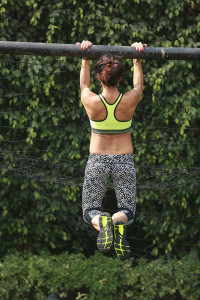 I’ll confess, when I started my fitness journey 6 years ago, I was overwhelmed by the testosterone-drenched weights area of the gym. There were bodybuilders with colossal biceps groaning and grunting as they slammed down their weights.
I’ll confess, when I started my fitness journey 6 years ago, I was overwhelmed by the testosterone-drenched weights area of the gym. There were bodybuilders with colossal biceps groaning and grunting as they slammed down their weights.
I get it. It doesn’t exactly make for an appealing environment for the fitness newbie. However, strength training is a crucial component of health and fitness, so don’t let intimidation get the better of you. Lifting weights has immense benefits: it reduces your risk of osteoporosis and chronic conditions, including back pain, arthritis, obesity, heart disease and diabetes. It also improves stamina and corrects imbalances thereby reducing risk of injury. And ladies, take note, we have lower testosterone levels than men, so contrary to popular belief weights will not make you big n’ bulky! Instead strength training will allow you to build muscle and increase your metabolic rate (so you burn body fat faster), leading to the lean and “toned” appearance you desire. Depending on how you lift weights, you can use it to achieve many different fitness goals.
For the strength training newbie, here are my top tips to help you build you confidence and discover the benefits.
Learn the correct exercise form
For the best and safest results in the short and long term, it is vital that you master the correct exercise techniques. Good form = good posture. The correct starting position for most exercises is shoulders back, chest out, standing (or sitting) tall, with your abs tight.
Start slow
Start using a weight at which you can comfortably perform the exercise 8 to 12 times in a set. When you are confident, gradually increase either the weight, the number of repetitions, or number of sets. Gradual progression will prevent injuries, aches and pains that can take you a step back.
Stick to basics
 Master the techniques and gain strength through a few basic, compound exercises before progressing to more complex variations and movements. Here are some of my favourite exercises to get you started:
Master the techniques and gain strength through a few basic, compound exercises before progressing to more complex variations and movements. Here are some of my favourite exercises to get you started:
- Squats
- Deadlift
- Lunges
- Push Ups
- Dips
- Inverted Row
- Pull Ups
- Plank
Set goals
I find that clients who approach me with unclear goals often lack motivation and direction. Setting realistic short and long-term goals is the first step in changing your lifestyle. Short-term goals provide frequent feedback, reassurance and positive signalling, keeping you motivated to reach your broader ambitions. Goals will also boost your confidence and make the overall experience more enjoyable.
Less is more
More does not mean better in resistance training. You do not need to spend hours in the gym for maximum results. Furthermore, training every day may do your body more harm than good – your muscles need a certain amount of rest in order to strengthen and grow. An average person needs 24 to 48 hours to recover from a workout so listen to your body and allot time accordingly. My routine is 45 minutes of high intensity work with 2 days off per week to allow my muscles to recover.





Share your thoughts...